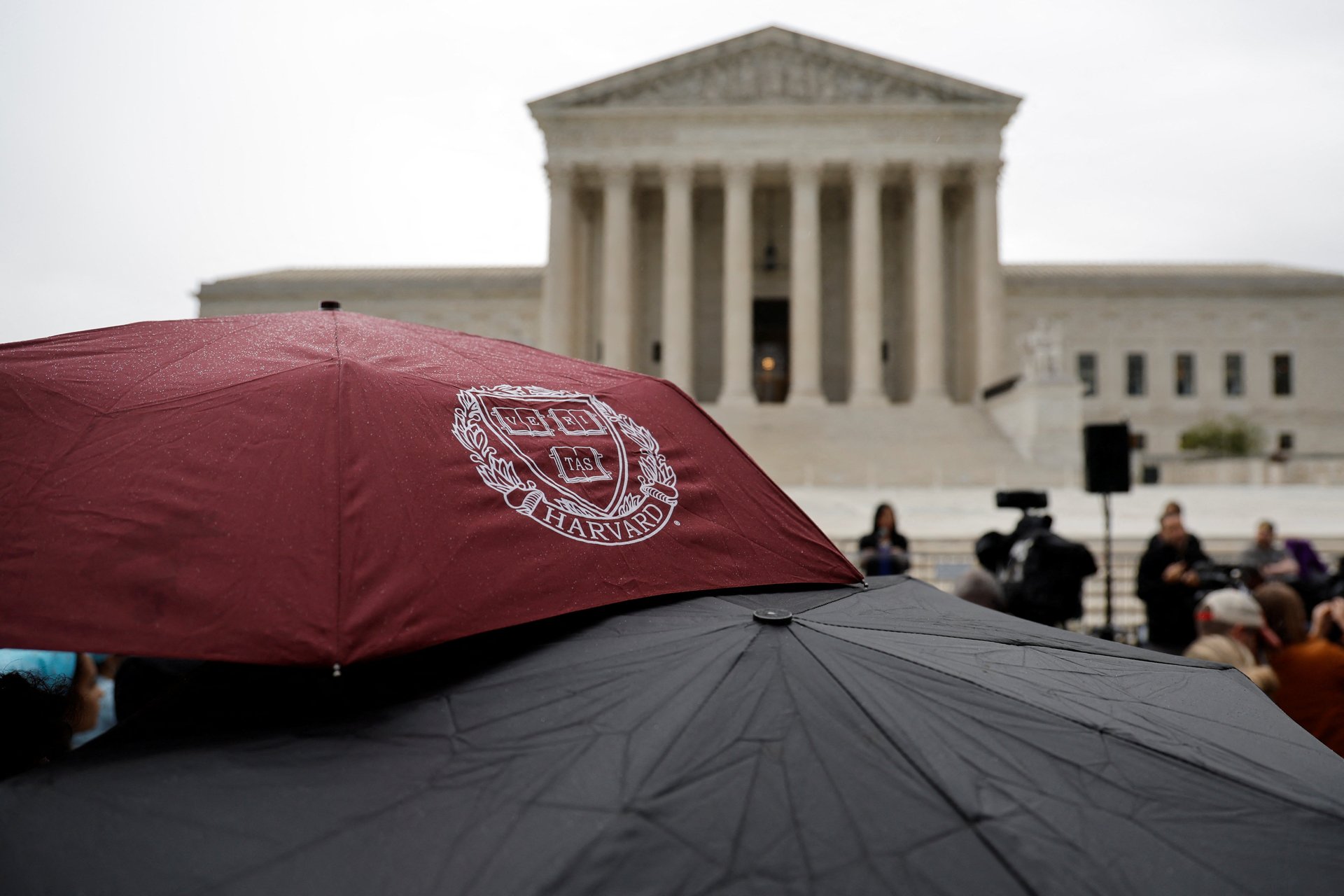With affirmative action struck down, here's how employers can protect workplace diversity initiatives
While the US Supreme Court has overruled affirmative action, companies don't need to rush to conclusions about their DEI programs—yet.

The US Supreme Court has officially struck down affirmative action, ending a forty-year precedent that allows universities to consider the race of applicants in their admissions processes. But the effects of the ruling could be felt beyond the world of higher education—and ripple into the workplace.
As Quartz has pointed out before, with affirmative action overruled, the court could apply similar logic to diversity in the workplace (especially in hiring practices, which are most analogous to admissions). Subsequent rulings in the workplace could limit a company from saying it wants to promote more women in engineering positions, for example, or instituting guidelines like the Rooney Rule that ensure at least one minority is interviewed for any position. Employers and advocates are understandably worried that other programs, like racial equity audits, or positions, like the chief diversity officer, could come into question.
But regardless of the cases’ implications for affirmative action, it’s not time for companies to preemptively pull back on their diversity and inclusion initiatives, says Bonnie Levine, a practicing employment attorney specializing in workplace DEI and founder of Verse Legal. “Emphatically, the legal framework is not identical, and there are different legal standards that come into play,” she adds. Leaders shouldn’t be rash, reactive, or alarmist in their responses. And they shouldn’t rush to conclusions about their own DEI initiatives “by saying, ‘Okay, now diversity is dead,’” she adds.
An imperfect analogy, she suggests, is how the court’s overturning of Roe v. Wade relates to gay marriage. One ruling doesn’t have bearing on the other. “Of course, people are rightly concerned about where the trajectory is going,” she says. “But we don’t suddenly start assuming that that’s done.”
The end of affirmative action doesn’t mean the end of diversity programs at work—yet
So how can workplaces plan for—and protect—the future of their diversity and equity programs with affirmative action overturned? Quartz spoke with Levine about the first things employers should do when the ruling comes down.
Know how and where the ruling applies. The two cases the court ruled on—one involving the University of North Carolina, and the other involving Harvard University—have different legal frameworks than workplace protections. They apply to public schools (under the 14th Amendment, which guarantees “equal protection of the laws”) and most private universities (under Title VI of the 1964 Civil Rights Act, which bars discrimination at those that receive federal funding). Meanwhile, the workplace is covered under Title VII, which guarantees “equal employment opportunity” at private companies and the US government. The difference in that legal framework is why the ruling won’t apply to corporate diversity, equity, and inclusion programs yet.
Resist the urge to run on assumptions. It’s common-sense advice, Levine says, but worth underlining: Have lawyers read the ruling in full before imagining how it will apply to your company’s diversity initiatives. “You really do have to look at all the facts before you draw takeaways,” Levine says. “Looking at the opinion is the only way to know how much the reasoning from this decision will translate in the employment space.”
Double down on diversifying your recruitment pools. Though the legal protections are different, there is a direct relationship between education and employment: Access to top jobs. University administrators say ending affirmative action will change the demographic makeup of graduating classes, with far fewer Black and Hispanic students at the most selective schools. And that changes who gets access to high-paying industries like finance, law, and consulting, which historically recruit hiring classes from elite institutions.
Companies should take the change as an opportunity to reckon with their recruiting practices, Levine says. Expand hiring efforts at universities with more diverse student bodies or those that serve specific groups (such as historically Black colleges and universities). Tap communities and professional organizations dedicated to underserved groups (say, Alpfa, AfroTech, or COOP Careers). Reexamine your hiring practices for inequities or implicit bias—and audit tech tools, too, which can bolster bias.
Stick to the value statements you’ve made already. “If private employers have taken a bold moral stance on something, and then they walk it back reactively, [it won’t] go well for them,” Levine says. Putting out ineffective DEI efforts—especially the kind that feels wishy-washy, performative, or, yes, reactive—can leave a company worse off than making no inclusion efforts at all. It can undermine morale, damage employees’ trust in their company, and make it harder to authentically recruit a representative team.
Companies can’t take back the values they’ve named. “If it becomes a little more complicated [for compliance], you figure out how to work within that,” Levine says. “Adjust with the same values that you’ve already stated.”
Alternately: Consider the court of public opinion. The law has been relieved of making companies accountable to their values, Levine adds, thanks to the rise of employee activism. “There’s a quicker way through social media—and through social movements [like] Black Lives Matter and Me Too—for workplaces to be impacted by what the public is asking for from corporations,” she says.
“I don’t think consciousness is going away,” Levine adds. And regardless of rulings, she says, employees and the public alike will notice when companies decide they’ll quit giving everyone a seat at the table.
Editor’s note: This story was originally published June 21 and updated June 29 after the US Supreme Court struck down affirmative action in a 6-3 and 6-2 vote. Follow the latest updates on the rulings here.
